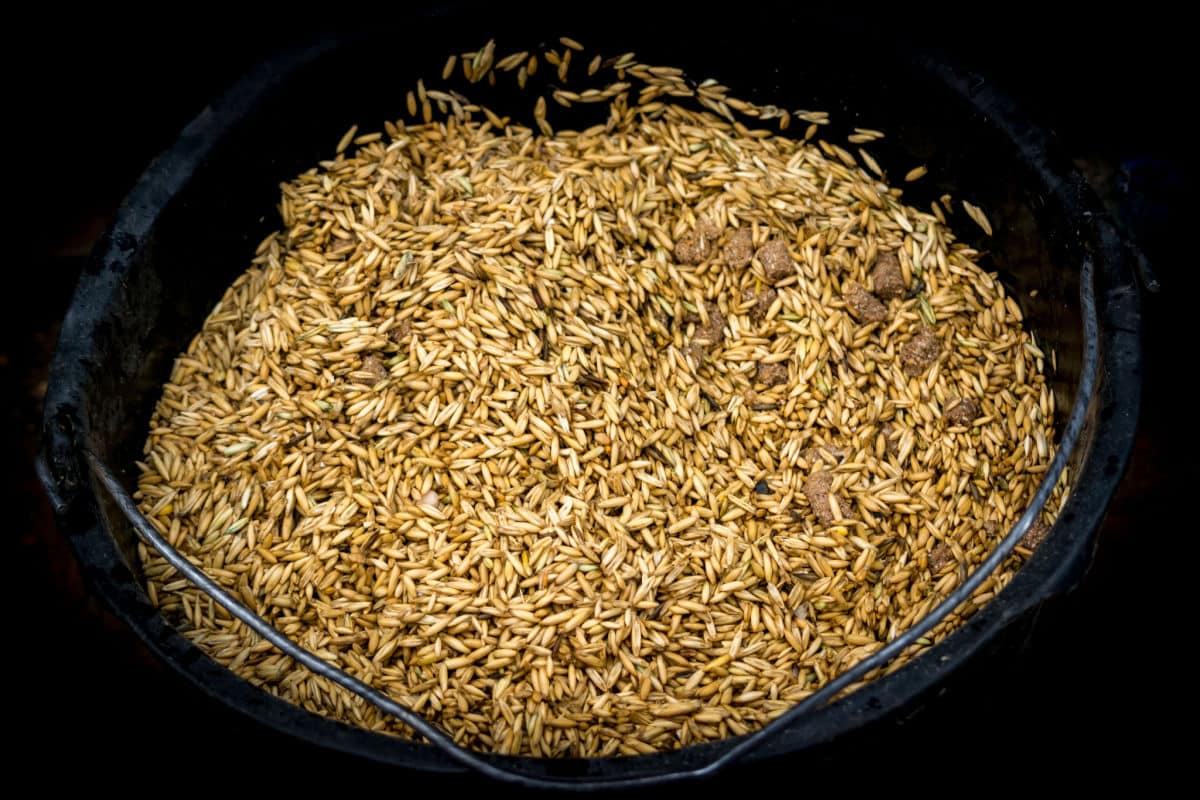October and November represent the culmination of the AQHA show season. And when you and your showmanship horse step under the bright lights at the Congress or the World Show, you want your performance – and your horse – to shine. Literally.
Whether you’re headed to Columbus, Oklahoma City, or the local show grounds to compete, a horse with that extra sparkle is what it takes to get noticed in the showmanship ring.
Remember, no amount of Show Sheen will do for your showmanship horse’s appearance what great nutritional management (and a little elbow grease) can.
What Makes a Congress-Level Showmanship Horse
According to the AQHA Judging Showmanship handbook: “The ideal showmanship performance consists of a poised, confident, neatly attired exhibitor leading a well groomed and conditioned horse that quickly and efficiently performs the requested pattern with promptness, smoothness and precision.”
Half of your total score goes to performance while the other half goes towards overall exhibitor and horse appearance – making your well-groomed horse’s weight, shining hair coat, and healthy mane and tail critical components in scoring that perfect 20.
But in the case of grooming, exhibition, and performances being equal, it’s your horse’s perfectly managed appearance and happy, willing demeanor that will catch a judge’s eye. So how do you ensure a great looking horse with a great attitude? It starts with good nutrition and a healthy digestive system.
4 Nutritional Management Tips For a Winning Showmanship Horse Turnout
A dappled and glowing hair coat is outward sign of inward health and good nutrition. A healthy, comfortable horse is also a happy horse – willingly performing that showmanship pattern while relaxed, with ears up, and a pleasant disposition.
Tip #1: Feed Your Showmanship Horse Exceptional Hay
High-quality hay is the foundation of any horse’s healthy diet. Your horse will get a lot more from munching on a great hay than on a great grain. Be sure to make sure your horse has access to hay around the clock; feed multiple times throughout the day or use doubled-up hay nets to slow down feeding time.
Do feed: a good mix of high quality hays, such as high-protein alfalfa and/or a quality grass hay; hay that smells good; hay that is palatable (do the horses eat every last wisp, or pick at it and leave some behind?).
Don’t feed: hay from regions known to have blister beetles; hay that is stemmy; hay that is dusty; hay that is packed too densely or growing white, flaky mold.
Ensure that your horse is getting most of its protein from hay. And have your hay tested several times a year to ensure its quality.
Tip #2: Feed an Easily Digestible Grain
The equine digestive system is designed for constantly munching small amounts of forage (see Tip #1), not processed and grain feeds – and especially not the sugary molasses used in sweet feeds. Beware that many of the feeds on the market today contain a level of carbs that is difficult for horses to digest.
While your horse can get most of what it needs from the high-quality hays mentioned above, a good grain is often necessary to maintain a performance horse in work. Look for grain feeds that have a medium protein, high fat, and low carb ratio. This break-down is good for horses in work as well as for keeping good weight on a showmanship horse. Keep in mind, though, that too much protein or fat literally goes to waste, while too many carbs can lead to serious digestive issues.
Do feed: well-balanced feeds low in starch; oats,, beet pulp, and chaff are all good feed ingredients.
Don’t feed: molasses; corn, barley, or other complex carbs that are difficult for horses to digest; low-cost formulation feeds” made of bulky pellets that are full of sugar and low on nutrients.
Tip #3: Feed at Least 3 Times a Day
A horse’s stomach is only about the size of a volleyball – so if given a 6-7 pound grain meal, your horse is at max capacity. And when feed only spends 30 minutes or so in the stomach, it doesn’t always get broken down completely – sending it to through to the hindgut where it can cause trouble.
Break feeds into as many small meals as possible throughout the day – no more than 5 pounds at a time. This will help ensure that grains are digested and absorbed completely in the foregut. Your horse will get the full nutritional value for his feed that way and his hindgut will be better protected.
Tip #4: Promote Digestive Wellness with SUCCEED
No matter what and how you feed – or your barn manager feeds – your horse, you can give him an extra edge with SUCCEED® Digestive Conditioning Program®. SUCCEED steps in to enhance total equine digestive wellness where feed programs leave off:
- aids in nutrient absorption
- normalizes the rate at which food passes through the digestive tract
- lubricates and protects the GI tract lining
Focus on the inside, and the outside of your horse will naturally flourish. Take steps now to make sure that when you and your showmanship horse step hoof into the show pen, he’ll be glowing with health from the inside out.


